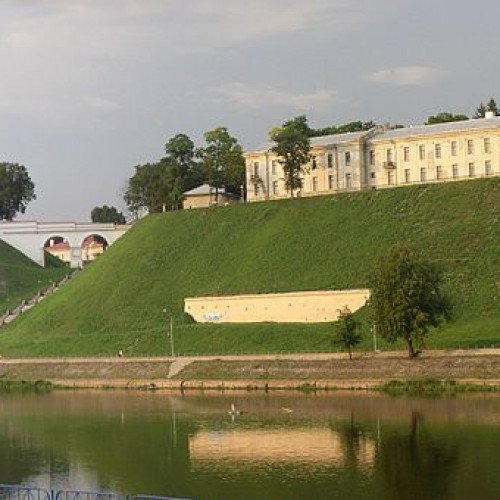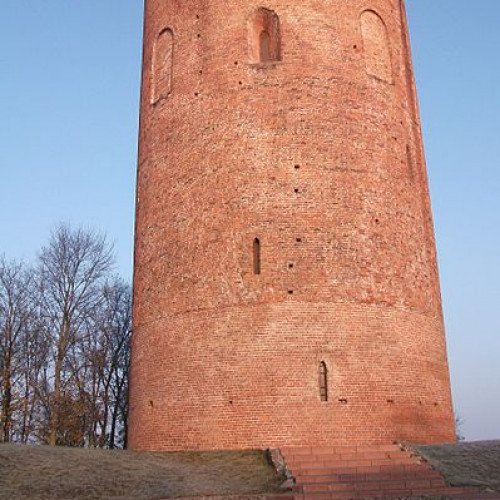Castles of "Belarus" NEW GRODNO CASTLE vs TOWER OF KAMYENYETS

NEW GRODNO CASTLE
The New Castle in Grodno, Belarus is a royal palace of Augustus III of Poland and Stanisław August Poniatowski where the famous Grodno Sejm took place in 1793. New Grodno Castle is 116 metres (381 ft) above sea level. The royal residence was built on the high bank of the Neman River at a little distance from the Old Grodno Castle which had suffered great dilapidation in the aftermath of the Swedish occupation in the early 18th century. The two castles are joined by a 300-year-old arch bridge. The palace compound was designed by Carl Frederick Pöppelmann. Construction was carried out between 1734 and 1751 under the supervision of several other Saxon architects, including Johann Friedrich Knöbel and Joachim Daniel von Jauch. The palace was completed under the direction of Giuseppe de Sacco in 1789 and remained home for King Stanisław II August until 1797. Used as a hospital and barracks throughout most of the 19th century, the palace was renovated by the Polish administration in the interwar period. Scarcely anything is left of the original fabric of the castle, whose refined Rococo detailing vanished during World War II. There followed a hasty and rather superficial refurbishing of the palace by the Soviets with a view to making it the headquarters of a local obkom. A plaque on the wall of the palace commemorates the council of war held in the royal residence by Tadeusz Kościuszko on 30 October 1794.
Statistics for this Xoptio

TOWER OF KAMYENYETS
The Tower of Kamyenyets, often called by the misnomer the White Tower (Belarusian: Белая вежа, transliteration: Bielaya Vieža or Belaya Vezha), is the main landmark of the town of Kamyenyets in Belarus. The name Bielaja Vieža (alternative transliteration: Belaya Vezha), which literally means White Tower or White Fortress in Belarusian, presumably derives from the tower's proximity to the Belavezhskaya Pushcha Forest, but not from its color, which has been brick-red through the ages, never white. The first record in the chronicles about the foundation of the tower dates from 1276. Erected between 1271 and 1289 by the architect Oleksa as a frontier stronghold on the northern border of the Principality of Volhynia, it is the only such tower remaining to this day in Belarus. Once similar towers were built in Brest, Grodno, Turaw, Navahradak, but they were destroyed in the course of wars.) Today it is a national historic site. Standing atop a gentle rise overlooking the Liasnaja river, the tower is the main landmark of Kamyenyets today. Since 1960 the tower houses a branch of the Brest regional museum. On January 30, 2004, the site was added to the UNESCO World Heritage Tentative List, in the Cultural category.